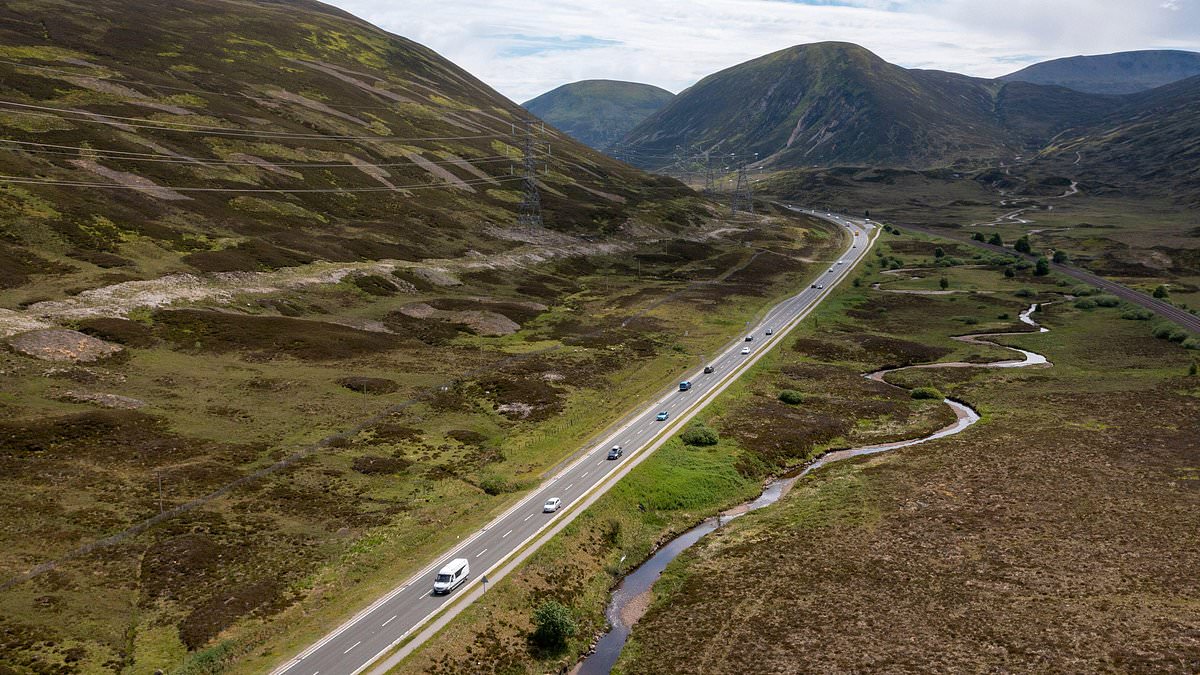
Scotland’s A9 upgrade, a long-standing infrastructure promise, continues to face significant delays and soaring costs, sparking public concern over safety and efficiency. New reports reveal that dualling just 11 miles of Scotland’s most dangerous road has already cost taxpayers over £500 million, with the next six-mile stretch projected to add at least £300 million by 2027. This would push the total expenditure to a staggering £800 million for only 17 miles of road.
The Timeline of Delays and Rising Costs
Originally pledged in 2011 by the SNP, the plan aimed to upgrade 88 miles of single carriageway between Perth and Inverness to dual carriageway by 2025. However, a lack of funding and prioritization has pushed the project’s completion date back to 2035. So far, only two of the 11 planned sections have been completed: a five-mile stretch from Kincraig to Dalraddy and six miles from Luncarty to Pass of Birnam.
The next portion, a six-mile section from Tomatin to Moy, was initially expected by 2027 but has since been postponed to 2028. Construction on the remaining eight sections has yet to commence, with the project’s total cost now estimated to exceed £3.7 billion.
Financial Breakdown of the Project
Figures obtained through freedom of information requests found that between 2012 and June 2025, the SNP spent over £520 million on preliminary stages such as land acquisition, design, demolition, and procurement, in addition to the actual construction. A further £300 million has been allocated for work leading up to 2027. Despite the massive expenditure, less than a third of the A9 has been dualled.
Scottish Conservative transport spokesperson Sue Webber criticized the inefficiency, saying, “The SNP’s ongoing failure to dual the A9 is Scotland’s national shame. They’ve squandered £800 million of taxpayers’ money while leaving the project far from finished. In contrast, we would make this a top priority to ensure safety and efficient spending.”
Safety Concerns on Scotland’s Deadliest Road
The A9 is notorious as a high-risk road, frequently switching between single and dual carriageway, a factor contributing to its dangerous reputation. Over the past four years, there have been 320 injury collisions, including 135 serious incidents and 28 fatalities. The deadliest year, 2022-23, saw 13 deaths, with seven more recorded in 2024-25.
Among the recent tragedies was the death of Ashleigh Watson, a 31-year-old mother of two, in a single-vehicle crash just before Christmas last year. These incidents highlight the urgent need for a safer, modernized A9.
A spokesperson for the Scottish Government defended their commitment to the project, stating, “The A9 is an essential route in Scotland. It must be safe, reliable, and resilient, and that is what this Government will deliver.”
Public Frustration Over Delayed Progress
The delays and rising costs have fueled public dissatisfaction, with many demanding accelerated action to improve the A9’s safety and efficiency. Proposals for emergency legislation to bypass bureaucratic delays have been suggested, aiming to speed up progress on this vital infrastructure.
As Scotland’s primary transport artery to the Highlands, the A9 represents both an economic lifeline and a significant safety concern. Until the project is completed, its dangers will persist, putting drivers at risk and burdening taxpayers with escalating costs.





